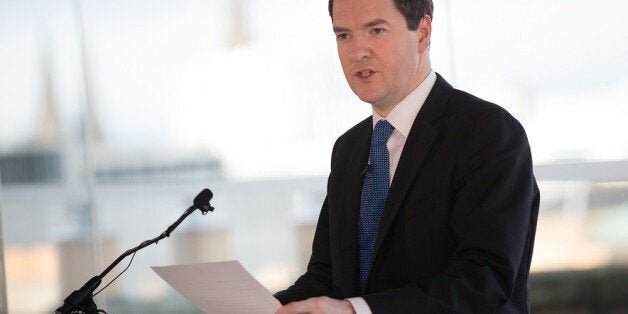
George Osborne's austerity agenda will see the public sector suffer the biggest cuts in fifty years, the Institute for Fiscal Studies has warned.
The IFS found that the number of people employed by the government from 2010-2011 to 2018-2019 would fall under Osborne's planned cuts by 1.1 million, equivalent to nearly a fifth of the workforce, as forecast by the government's independent forecaster the Office for Budget Responsibility.
If teachers and medical professionals remain protected by ministers continuing to protect spending on education and the NHS, the IFS warned that the workforce in other government sectors could shrink by as much as 40%.
Even if just 200,000 jobs were lost in the NHS and the education sector over the next five years, in a fall of 6%, around three in ten government employees in other sectors would still lose their jobs.
IFS research economist, Jonathan Cribb, one of the authors of the report, said: “The public sector workforce grew by over 600,000 over the 2000s. Even so the scale of the reductions expected over the next few years looks challenging. If delivered, the 1.1 million drop in general government employment forecast by the OBR between 2010–11 and 2018–19 would be almost three times larger than the previous drop during the early 1990s.
"The workforce is a useful prism through which to look at the effects of cutting total spending whilst protecting the NHS and schools budgets from cuts. With limited falls in the health and education workforces the number of public sector workers in other areas could fall by 30-40% over the next five years.”
If ministers keep the education and NHS budgets protected, the proportion of public sector workers employed in those two sectors would rise from 57% to over 70% by 2018, the IFS said.
The impact of the decline in public sector employment will vary in different parts of the country, as the percentage of workforce in the public sector is largest in Wales, Scotland, Northern Ireland and the North East and smallest in London, the West Midlands and the South East.
Natalie Bennett, leader of the Green Party, told HuffPostUK: "This report indicates that Tory Party plans for the future of our public service would be extraordinarily destructive.
"The ideological commitment to small government means slashing away at essential public services and transferring what were previously government staff into the private sector, with cuts in pay and conditions and public money passing straight into private profits.
"With current flood crisis reminding us that we need to plan for resilient communities that are able to withstand shocks and deal with adversity, a skeleton public service of demoralised, overloaded staff is not what we need."
A spokesman for the Public and Commercial Services Union, which represents civil servants and other public sector staff, told HuffPostUK: "The recent floods are perhaps the starkest example yet of what happens when public spending is cut and public servants lose their jobs. No one in the flood-hit communities expects, or wants, the private sector to come to their rescue, they want and deserve government support."